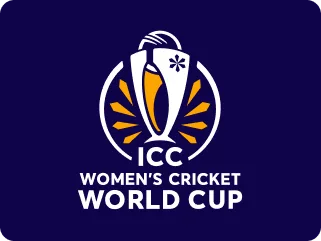
Conceived in a country built around cricket clubs, the Hong Kong Cricket Sixes are a tournament like no other in many ways.
On November 14, 2004 – months after the national team had played in their first ODI – something unusual happened: Hong Kong made it to global cricket news. One Hussain Butt hit 36 sixes en route to 311 not out in a university match.
These were not ordinary shots. Twelve balls could not be retrieved. Players in an adjacent tennis court were forced to take cover. The match still continued … until the police intervened and postponed the game for “public safety”: two of his sixes hit passing (not parked) cars.
Butt later hit 102 not out in 42 balls against Myanmar, and 218 not out in 191 balls against the UAE. During the latter, he hit 10 sixes. He also played two ODIs, but remains largely forgotten in international cricket. If we do not consider the Hong Kong Cricket Sixes, that is.
Butt had 101 runs (joint third-most) at a strike rate of 240 in the 2001/02 edition. In 2004/05, he had 118 (second-most) at 251. His numbers sat well next to MS Dhoni (113 at 231) and Shahid Afridi (111 at 336).
That year, Butt was named the Player of the Tournament. That honour that had gone to Wasim Akram and Jonty Rhodes before him and Craig McMillan and Glenn Maxwell after, but to none of Graham Gooch, Steve Waugh, Sachin Tendulkar, Brian Lara, Shane Warne, Anil Kumble, and David Warner. While not a big name, Butt held his own against international stars because he found a stage where he could compete against them.
The Hong Kong Cricket Sixes gave local cricketers like Butt a platform where they could pit themselves against the best in the world. It was a novelty, an ahead-of-the-times innovation by a country with an ancient cricketing culture.
A few things first
In 1842, China ceded Hong Kong to Britain as part of the Treaty of Nanking. Cricket had been played in Hong Kong the year before, but now it became more popular. Founded in 1851 to promote “cricket, tennis, croquet and other athletic sports and pastimes”, the Hong Kong Cricket Club is among the oldest cricket clubs outside Britain.
By the late 1850s, British teams were playing representative Hong Kong XIs en route to Shanghai, where cricket had also begun to thrive. The inevitable cricketing rivalry between Hong Kong and Shanghai began in 1866. For perspective, no Australian team had visited England until this point; Indians were only taking to cricket; overarm bowling had been legalised only two years ago; and few outside his family had heard of WG Grace.
This rivalry soon expanded by incorporating teams like the Federated Malay States, the Straits Settlements, and Singapore. The contests, later known as the Interport Matches, existed as recently as in 2020.
Cricket was thriving in Hong Kong when they toured Shanghai for one of these clashes, in 1892. On October 18, 1892, on their voyage back home, the SS Bokhara sank in a typhoon. Eleven cricketers died in the tragedy. Hong Kong, a country with a small population, lost their cricketing cream when they were probably on the verge of breaking through to the next step. Six and a half decades before the Munich Air Disaster.
But cricket never stopped. The First Division League in Hong Kong began in 1903/04. The Second Division, in 1921/22. In between, the Kowloon Cricket Club (the birthplace of the Hong Kong Cricket Sixes in 1992) was founded in October 1904. Club cricket kept the sport alive.
There were issues, of course. The Hong Kong and Kowloon clubs, both private, still owned two of the three main turf pitches in the country. As a result, most cricketers had to pay a lot of money for access to cricket grounds and training facilities. The battle was within, not from outside.
Hong Kong became an ICC Associate Member and, in 1982, played their first ICC Trophy. Dermot Reeve was part of that squad. Had he not moved to England, no one would probably have known that he was good enough to play top-level cricket.
Decades later, even after Hong Kong had made their mark in international cricket, Mark Chapman moved to New Zealand and Anshuman Rath made an unsuccessful attempt to find a career in India.
For years, the Hong Kong cricketers seldom got the opportunity to play against, or even watch, the best players in the world. There might have been more Reeves in Hong Kong in the 1980s without anyone realising.
The genesis of the Cricket Sixes
The solution was simple. Cricketers from around the world would come to play a tournament in teams that would represent countries. The matches would be short-form, of five overs.
It is important to understand the novelty of the idea. Domestic cricket in England and, to a lesser extent, other nations had featured overseas cricketers, but the teams did not have international flavour. Kerry Packer’s SuperTests and Ali Bacher’s Rebel Tests had that, but the participating cricketers faced bans from their boards.
The Cricket Sixes trumped all of these. Long before T10 or even T20, they had launched a format shorter than both. It was a pocket-sized World Cup, played every year, featuring top-draw nations and allowing Hong Kong cricketers a platform.
As this annual tournament continued, Hong Kong went from strength to strength. Their rise might have been a coincidence, but they did reach the second round of the ICC Trophy in 1994 and 1997. In 2014, they finished third. That year, they defeated hosts Bangladesh at the T20 World Cup.
It will be an exaggeration to say the Hong Kong Cricket Sixes were solely responsible for the growth of cricket in the country over the past three decades. But this curious pocket-sized World Cup (12 teams, three days in the 2025 edition) has certainly played its part.








